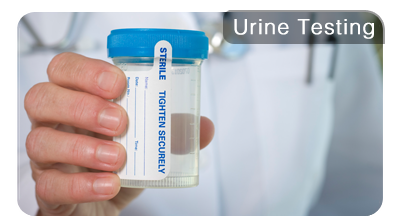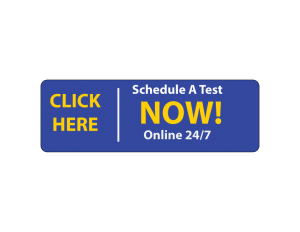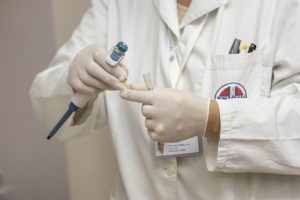Benefits of a Florida Drug Free Workplace
Overview
In 1990 the Florida Legislature enacted a State law titled “Florida Drug-Free Workplace” F.S 112.0455. This law provided specific requirements which an employer must comply with in order to be certified as a Florida Drug Free Workplace. The benefits of the Florida Drug Free Workplace Act are available for employers who are “certified” as a Florida Drug-Free Workplace. The State of Florida through this law encourages employers to drug test employees and promotes a safe Drug-Free Workplace environment.
How To Become A Florida Drug-Free Workplace?
Accredited Drug Testing Inc provides full compliance with Florida’s Drug-Free Workplace Act and all components necessary for an employer to be certified as a Florida Drug Free Workplace. Any business regardless of size, who wishes to be certified must implement and maintain all requirements of the Florida Drug Free Workplace law.
In addition to providing all of the services needed to comply as a Florida Drug Free Workplace, Accredited Drug Testing Inc has drug testing centers in all Florida cities.
To find a Florida drug testing center – Click Here
The State of Florida encourages all businesses regardless of size to be a Florida Drug Free Workplace and compliance with all requirements can provide many benefits for a Florida employer.
What are the benefits in becoming a Florida Drug Free workplace?
Benefits of a Florida Drug Free Workplace include
| · Reduction in employee absenteeism | · Reduction of employee theft |
| · Improved employee morale | · Dedicated employees |
| · Enhance customer service | · Reduction in health care cost |
| · Reduction in work related accidents | · Workers compensation discount |
Additional Benefits For The Employer
When an employee has a positive test result which violates the employers Drug Free Workplace Policy, the State of Florida provides the employer a defense in a Workers Compensation or unemployment claim.
Florida Statute 440.102 provides that medical and indemnity benefits are forfeited, and an employee may be discharged for testing positive for alcohol or a prohibited drug, or refuses to test, provided the employer has a program in compliance with the Workers’ Compensation Premium Reduction Act.
Furthermore, benefits are denied if the injury was caused primarily by employee’s intoxication or use of drugs not prescribed by a physician. If the employer does not have a certified program, an injured employee’s positive test or refusal to test creates a rebuttable presumption that the injury was caused primarily by the impairment, unless the employer has actual knowledge of and acquiesced while the employee was under the influence. Fla. Stat. §440.09(Supp. 2006).
In other words, if drugs are found in the employee’s system, that employee may not be entitled to workers compensation benefits under Florida Law.
Can the Florida Drug Free Workplace Program Save Money $$$
Florida companies that qualify as a Florida Drug Free Workplace can receive a 5% discount on their workers’ compensation insurance policy if the employer has properly implemented and continuously maintains all of the regulatory requirements of the Florida Drug Free Workplace Program.
Florida Drug Free Workplace requirements include
- A written drug and alcohol policy (distributed and acknowledged by all employees)
- 60-day testing commencement notification to employees
- Supervisor training (reasonable suspicion)
- Employee drug and alcohol testing program
- Employee Assistance Program (EAP)
- Drug testing must be conducted by a certified laboratory
- Drug test results must be verified by a Medical Review Officer
- Completion of a Florida Drug Free Workplace application (workers compensation credit)
To Review The Florida Drug Free Workplace Law – Click Here
The Florida Drug Free Workplace statute requires an employer to conduct pre-employment, reasonable suspicion and post-accident drug testing, random drug testing is optional.
Employers who do conduct random drug and alcohol testing must ensure that the company’s drug and alcohol policy state that random drug testing will be conducted. Random drug testing selection must be conducted in an impartial manner utilizing a random selection program which is administered by a computer program or other neutral process.
For more information on becoming certified as a Florida Drug Free Workplace call us today 800-221-4291 or send us a message




 Kratom is also illicitly abused, in a fashion similar to prescription pain-killers, touting opiate-mimicking effects. Although Kratom is used by all age groups, there has been a recent increase in use among young adults.
Kratom is also illicitly abused, in a fashion similar to prescription pain-killers, touting opiate-mimicking effects. Although Kratom is used by all age groups, there has been a recent increase in use among young adults.








 estimated value of $22,250. The puzzle box sent from the Netherlands, contained puzzle pieces mixed with over 1,000 pieces of the illegal party drug Ecstasy.
estimated value of $22,250. The puzzle box sent from the Netherlands, contained puzzle pieces mixed with over 1,000 pieces of the illegal party drug Ecstasy. during lunch.
during lunch.